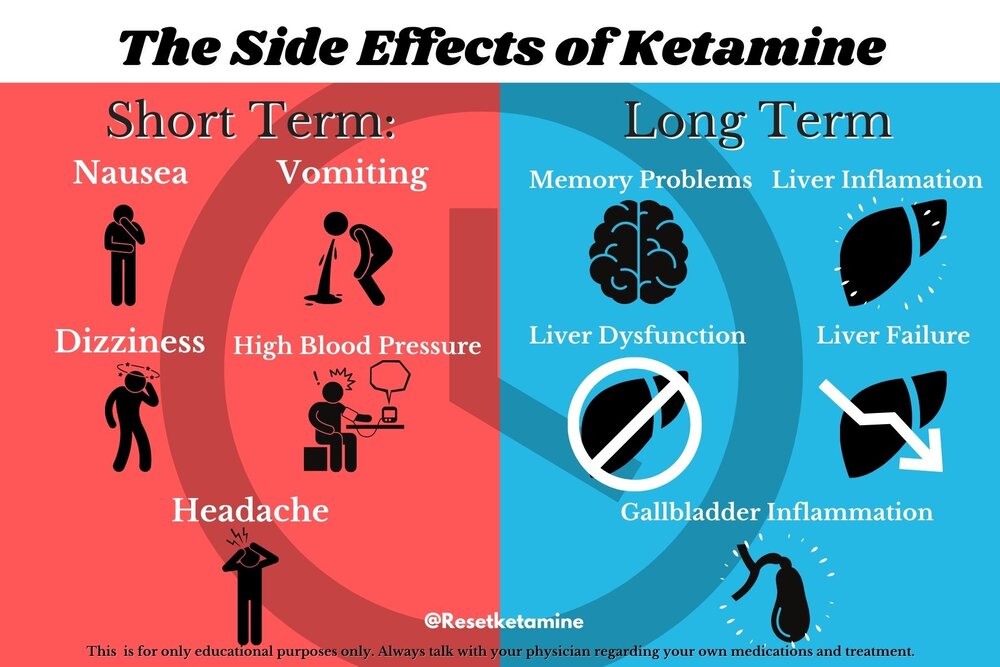/cloudfront-us-east-1.images.arcpublishing.com/gray/IZFQGQ4SS5EG7GBHTWMJBG6IKE.jpg)
Ketamine is an anesthetic medication used by doctors to induce unconsciousness. Sedation and pain reduction are two of the side effects. The drug is a Schedule III non-narcotic approved by the Food and Drug Administration (FDA) for use as a general anesthetic only. Doctors do, however, occasionally prescribe medication anesthetic for “off-label” uses like depression.
Off-label therapy refers to utilizing medications for conditions that the FDA has not approved. Ketamine is used by certain people for its hallucinogenic properties. Some people use ketamine as a date-rape drug because it can sedate, incapacitate, and cause short-term memory loss. While ketamine is safe to use in controlled medical settings, it can be hazardous when used recreational drug. Continue reading to learn more about ketamine’s uses, side effects, risks, and interactions with alcohol and other drugs.
What is Ketamine?
Ketamine (brand name: Ketalar) is a dissociative injected anesthetic (blocks sensory perception) that has been prescribed for human and animal usage in the United States since the 1970s. Esketamine (Spravato), the S-enantiomer of racemic ketamine, was approved in 2019 for treatment-resistant depression and acute suicidal ideation or behavior in depressed patients. A surgical anesthetic used by veterinarians is known as Ketaset.
/what-is-a-k-hole-21861_FINAL-5bd0bf8ac9e77c0051074e07.png)
Dissociative drugs can cause sight, color, sound, self, and environment distortion. Ketamine is available as a clear liquid, off-white powder, or nasal spray for intravenous injection.
Medical uses of Ketamine

- Ketamine can help with pain relief and memory loss (for example, amnesia from a medical procedure).
- It is used as an induction and maintenance agent for sedation and general anesthesia in surgery.
- It’s also been used to treat burns, battlefield injuries, and children who can’t take other anesthetics because of adverse effects or allergies.
- Ketamine works quickly to control depression symptoms and acute suicidal ideation by blocking the N-methyl-D-aspartate (NMDA) site.
- It is frequently used as an anesthetic in patients at risk of bronchospasm and respiratory depression at regular doses.
Ketamine Health Hazards and Effects
Ketamine abuse has been connected to both short- and long-term problems:
- Short-term: Attention, learning, and memory problems; dreamlike states, hallucinations; sedation; confusion; memory loss; elevated blood pressure; unconsciousness; dangerously delayed breathing
- Long-term: Bladder ulcers and pain, kidney problems, stomach pain, depression, and impaired memory.
When ketamine is used medically, the most common side effects include nausea, vomiting, dizziness, diplopia (double vision), sleepiness, dysphoria (unease, restlessness), and confusion. Shared needles also pose a danger of HIV, hepatitis, and other infectious diseases.
Ketamine use can be fatal in alcoholics or people who are severely inebriated with alcohol. There are animal reports that when ketamine is combined with coffee, there has been an enhanced risk of toxicity.

This may theoretically be a concern in people who have consumed energy drinks, which are frequently consumed in nightclubs where ketamine is abused.
Agitation and other central nervous system side effects are less severe than those experienced with PCP abuse.
Adverse effects may be less acute in those who abuse ketamine by insufflation (“snorting”), but they are still there. The most common symptoms of “snorting” include a rapid heart rate, elevated blood pressure, hallucinations, and impaired consciousness upon presentation to the emergency department.
Tolerance: Over time the effects can develop, needing higher dosages of the medicine to get the same level of effect. According to reports, the dissociative impact may fade over time. The dissociative effect alters the user’s perception of light and sound, as well as their feelings of detachment from themselves and their surroundings.
Withdrawal: it may occur after chronic, long-term use of ketamine. Chills, sweating, excitation, hallucinations, teary eyes, and drug cravings are all possible withdrawal symptoms.
When drugs are taken recreationally, those who share needles run the risk of HIV Transmission, hepatitis, and other blood-borne infectious diseases.
Read Also:
Juneteenth 2022 – Walmart apologizes for selling their themed ice cream